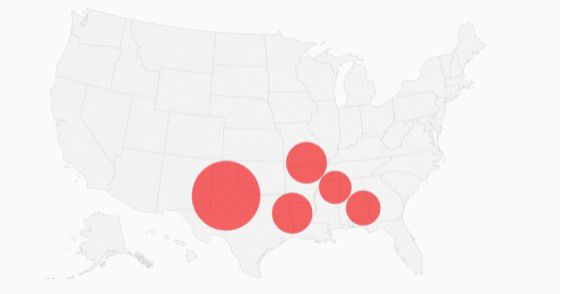TEXAS — Thirty clusters of counties in the U.S. have both significant populations and low vaccination rates. Of those, five pose a considerable threat to quashing COVID-19 in the U.S. and potentially around the world. The largest of those clusters includes a sizeable portion of Texas.
Those are among the takeaways from a new data analysis by Georgetown University researchers.
The Texas cluster, which also includes parts of Oklahoma and New Mexico, extends roughly from the central part of the state through the entire Panhandle and includes Amarillo, among numerous other cities.
The other clusters include parts of Louisiana, Georgia, Arkansas, Missouri, Mississippi, Georgia, Alabama, Florida and Tennessee.

The researchers note that the proximity of residents in the undervaccinated clusters could help fuel a resurgence of COVID-19 outbreaks.
“Humans don’t interact with each other randomly; we are more likely to interact with people living near us than those living farther away. So, the more geographically clustered unvaccinated individuals are, the higher the chance that an unvaccinated individual will interact with another unvaccinated individual, and the higher the chance that a disease transmission event will occur,” Georgetown researchers said. “Low vaccination clusters, therefore, are locations where risk of transmission of COVID-19 remains high.”
Georgetown researchers further noted that variants, such as the rapidly spreading delta variant, are born of disease transmissions.
"Variant emergence stems from disease transmission. Every disease transmission event creates an opportunity for a new variant to transmit to another host and take hold in a population. Therefore, curbing transmission events is our best recourse to prevent variant emergence,” researchers wrote.
The five most worrisome clusters comprise about 15 million people, of whom only a little over 27% are fully vaccinated. The national rate is 47.6%.
The key, researchers note, to preventing a return to COVID-19 case numbers the U.S. saw in late 2020 is overcoming vaccine hesitancy sooner than later.
"The COVID-19 vaccines currently in use in the U.S. are highly effective against transmission. Because the clusters of low vaccination do not have this protection against transmission, transmission risk remains high there (in the absence of social distancing and masking),” researchers wrote.



